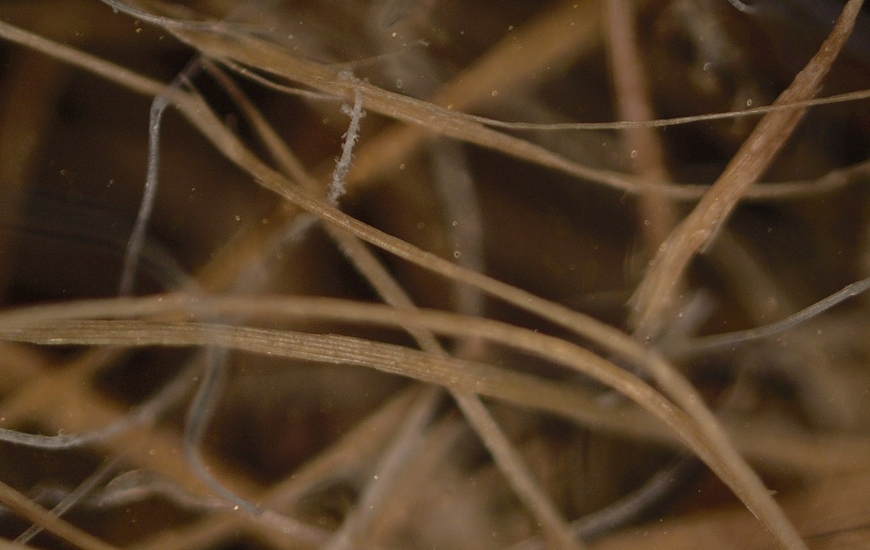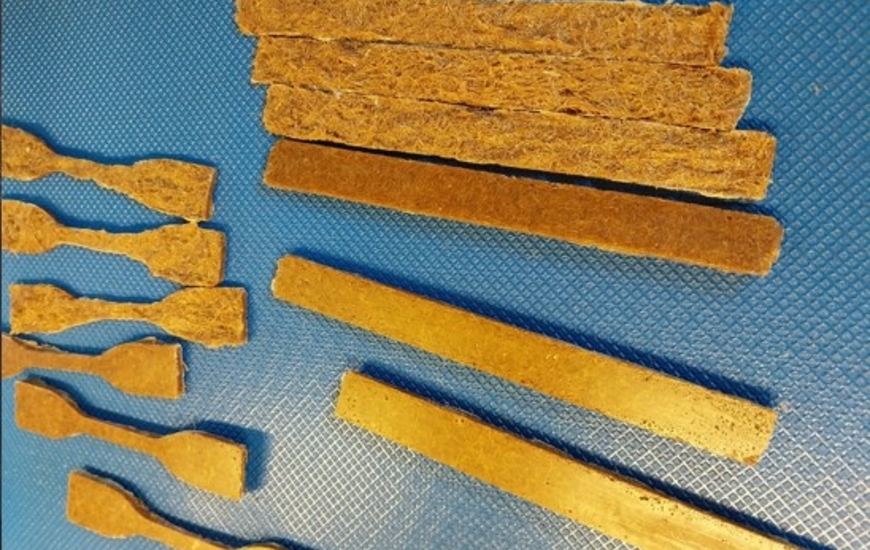by Carlo SANTULLI*, Cristiano FRAGASSA**, Danilo NIKOLIC***
Posidonia Oceanica is a plant that grows on the seabed and when torn by currents or other activities, for example as a result of fishing or navigation, it ends up beached. Its functions of controlling erosion and also climate change would suggest, in the case of contact with the beach being brief and not accumulating far from the sea, to leave it on the shore or to allow the tide to take it back.
In reality, also as a consequence of the long stay on the beach and the contamination with other waste, significant quantities of Posidonia are available for various uses in the field of materials, in the two forms in which the plant accumulates, which are agglomerated spheres with a diameter of a few centimetres and leaves up to about a metre long with a ribbon shape. From both forms it is possible to extract short fibres, with a very pronounced elliptical section, and of a cellulosic nature, but with a lignin content of no less than 30%.
The density of the material is approximately 1.1-1.2, therefore similar to most polymeric resins in normal use. The possible exploitation of this waste, also due to the difficult management of its accumulation on the coasts, especially subject to tourist and port activities, has produced a lot of scientific literature to propose various uses, also in the field of composites, which would in any case be more sustainable than disposal in landfill, or uncontrolled rotting on the coast, or even combustion for the purpose of energy recovery.
Posidonia is of interest for the production of acoustic and thermal panels with the addition of natural binders and also in the field of ceramic matrix composites for addition to gypsum, plaster, cement and concrete, or mixed with asphalt.
As regards polymer composites, Posidonia fibers, treated with caustic soda and/or silanes, similarly to other natural fibers, have been proposed in variable quantities, in most cases up to 40%, in thermosetting matrices, such as epoxy or bio -epoxy, or thermoplastic, such as polyethylene and polypropylene, in which the fibers are compatibilized with maleic anhydride, also in pellets for injection molding.
The greatest interest is understandably their use in bio -matrixes - both of an industrial nature, such as polylactic acid (PLA) also for 3D printing applications, or poly- hydroxyalkanoates (PHA) of bacterial origin, or even synthesised from food waste such as thermoplastic starches (TPS), based on corn starch, potato starch, etc.
The most foreseeable uses for now are in the field of packaging and in general in the production of panels for possible applications in the wood industry, but the interest in applications with higher added value appears to be constantly growing in recent years.
References
The present study, which explores the use of Posidonia in the production of eco-sustainable composites, was conducted within the framework of 'SeaComp - Ecological Marine Composites from Adriatic Waste', a collaborative project between the University of Camerino and the University of Montenegro, co-financed by the Ministries of Foreign Affairs and International Cooperation of the two countries.
* Scuola di Scienze e Tecnologie, Università di Camerino
** Dipartimento di Ingegneria Industriale, Università di Bologna
*** Facoltà di Studi Marini di Cattaro, Università del Montenegro
-

-
11 January 2025
























